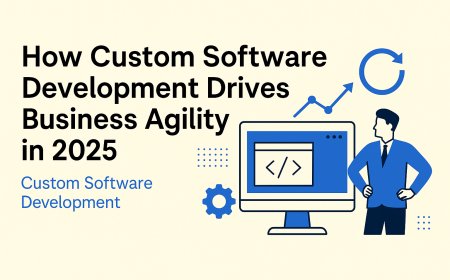How Medical Device Document Control Software Systems Support Regulatory Submissions
The Role of Medical Device Document Control Software Systems in a Regulatory Framework
Medical device companies operate within one of the most highly regulated environments. Ensuring timely and accurate documentation is critical not only for internal quality and operational excellence but also for satisfying regulatory bodies such as the FDA, EMA, and other global agencies. Medical Device Document Control Software Systems have emerged as strategic tools to streamline document-centric workflows and ensure regulatory preparedness. These systems provide a centralized framework to manage document lifecycle, enforce version control, and establish audit-ready document trails, essential for regulatory submissions.
Aligning Document Control with Global Compliance Expectations
The requirements of ISO 13485, FDA 21 CFR Part 11, and other regional regulations underscore the necessity of a robust Quality Management System (QMS) anchored by effective document control. Medical device document control software systems enable companies to demonstrate traceability, ensure document integrity, and automate change tracking, which are central to regulatory inspections. With stringent documentation mandates across the US, Europe, and APAC, life sciences and medical device firms must prioritize platforms that provide global configuration capabilities for seamless compliance.
Centralizing Quality Documentation with a Digital Document Management System
The complexity of managing hundreds or even thousands of controlled documents across functionsR&D, manufacturing, quality, and regulatory affairsmakes manual or siloed approaches unsustainable. A medical device document control software system centralizes all quality documentation, ensuring consistency and minimizing the risk of human error. By leveraging an integrated document management system, stakeholders can access current versions of SOPs, DHFs, DMRs, and other essential documents with confidence and speed. Centralization not only boosts operational efficiency but also mitigates compliance risks during audits and regulatory filings.
Supporting FDA and International Submissions with Document Integrity
Regulatory bodies like the FDA require comprehensive documentation to demonstrate that medical devices are safe and effective. Medical device document control software systems play an essential role in ensuring that documentation submitted with PMA, 510(k), or CE marking applications meets expectations. These systems ensure that every document retains its metadata, audit trail, and approval history, which is indispensable for regulators assessing the validity of data. Furthermore, by integrating with the broader QMS, these platforms align document control with broader Quality Management objectives, enhancing overall submission readiness.
Enabling Closed-Loop Quality Processes Through Document Management Software
The strength of medical device document control software systems lies in their ability to support closed-loop quality processes. These systems allow for seamless collaboration between document control, CAPA, nonconformance tracking, and risk managementall within a unified QMS architecture. When a deviation or audit finding triggers a procedural change, the document management software ensures real-time updates, controlled reviews, and secure approvals. This closed-loop integration is essential for maintaining audit readiness and ensuring that documentation always reflects the current state of processes.
Automating Document Control Workflows for Accuracy and Traceability
Manual document management workflows are error-prone and time-consuming, often leading to version conflicts, missed approvals, and delayed regulatory submissions. Medical device document control software systems automate the document lifecycle, including authoring, review, approval, issuance, and archival. Automated workflows enforce deadlines, route documents to the right approvers, and maintain full traceability of every change. This level of automation enhances accountability, reduces administrative burden, and significantly accelerates the documentation required for regulatory submissions.
Enhancing Collaboration Across Global Teams
Many medical device companies operate across geographies, with design centers, manufacturing sites, and regulatory teams distributed globally. Medical device document control software systems support real-time collaboration through cloud-based platforms that ensure document availability regardless of location. Version control and access control mechanisms help maintain consistency, while multilingual support enables teams to work efficiently across regions. In global regulatory submissions, this centralized and collaborative environment is crucial for reducing discrepancies and aligning cross-functional teams.
Integrating Document Control into the Broader Quality Management Strategy
Document control cannot operate in isolation. It must be part of a larger quality management strategy that includes risk-based thinking, preventive action, and continuous improvement. A medical device document control software system, when embedded within a modern Quality Management System, becomes a powerful enabler for end-to-end compliance. Whether its linking controlled documents to training records or connecting design control outputs to submission files, the value of integration lies in transparency and auditabilitykey factors for successful inspections.
Facilitating ISO and FDA Readiness with Consistent Document Practices
Consistent documentation practices across the organization are a prerequisite for ISO 13485 certification and FDA compliance. Medical device document control software systems ensure that templates, approval paths, and retention schedules adhere to regulatory expectations. Auditors and inspectors can quickly verify that documentation is current, approved, and accessible. Moreover, these systems allow for historical traceability, enabling companies to reconstruct document lifecycles during regulatory investigations.
Why ComplianceQuest is Essential for Business in 2025
As regulatory pressures increase and global supply chains grow more complex, medical device manufacturers need a next-generation solution to manage quality documentation and ensure compliance. ComplianceQuest, built natively on the Salesforce platform, offers a fully integrated QMS with best-in-class document control capabilities. It allows life sciences organizations to manage controlled documents, link them with other quality processes, and ensure audit readiness in real time. In 2025, the ability to scale operations, maintain digital traceability, and collaborate securely across geographies will differentiate market leaders. ComplianceQuest enables precisely thatmaking it the strategic choice for forward-thinking quality leaders committed to continuous compliance and operational excellence.
In a landscape where document control is not just a compliance requirement but a business enabler, investing in the right medical device document control software systems will be pivotal for success.


































